The Factorial ANOVA (with independent factors) is kind of like the One-Way ANOVA, except now you’re dealing with more than one independent variable.
Here's an example of a Factorial ANOVA question:
Researchers want to test a new anti-anxiety medication. They measure the anxiety of 36 participants on different dosages of the medication: 0mg, 50mg, and 100mg. Participants are also divided based on what school they are attending, which researchers hypothesize will also affect anxiety levels. Anxiety is rated on a scale of 1-10, with 10 being “high anxiety” and 1 being “low anxiety”. Use alpha = 0.05 to conduct your analysis.
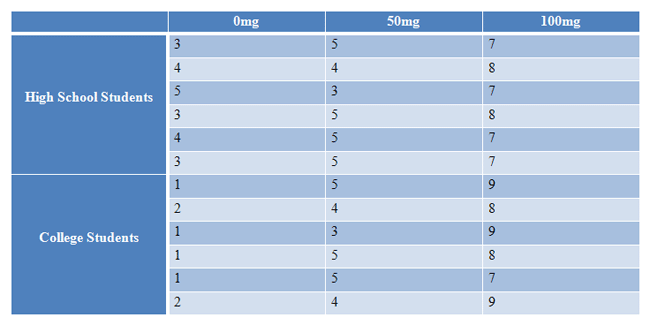
|
Figure 1. |
|---|
Let's try a full example:
| Steps for Factorial ANOVA, Two Independent Factors |
|---|
|
1. Define Null and Alternative Hypotheses 2. State Alpha 3. Calculate Degrees of Freedom 4. State Decision Rule 5. Calculate Test Statistic 6. State Results 7. State Conclusion |
1. Define Null and Alternative Hypotheses
Here, we have three. One for each main effect, and one for the interaction.

|
Figure 2. |
|---|
2. State Alpha
alpha = 0.05
3. Calculate Degrees of Freedom
Degrees of freedom are calculated as follows. "a" is the number of a groups you have, "b" is the number of b groups you have, and "N" is your total number of scores.
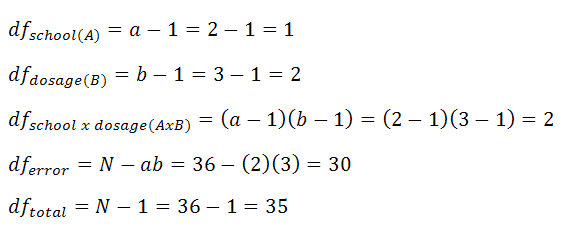
|
Figure 3. |
|---|
4. State Decision Rule
We have three hypotheses, so we have three decision rules. Critical values are found using the effect and error degrees of freedom for our three effects:

|
Figure 4. |
|---|
We now head to the F-table and look up our critical values using alpha = 0.05. In the table, we find the critical values shown below:

|
Figure 5. |
|---|
These critical values bring us to our three decision rules:
[School] If F is greater than 4.17, reject the null hypothesis.
[Dosage] If F is greater than 3.32, reject the null hypothesis.
[Interaction] If F is greater than 3.32, reject the null hypothesis.
5. Calculate Test Statistic
First, we'll put the degrees of freedom that we've already calculated into our source table:
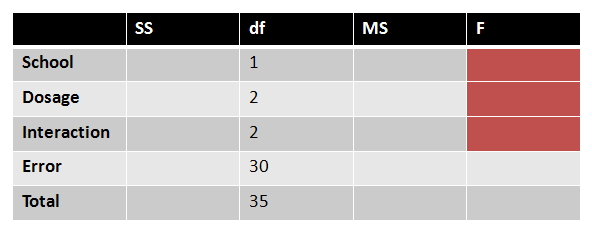
|
Figure 6. |
|---|
Next, we need to find the five SS values we are missing:

|
Figure 7. |
|---|
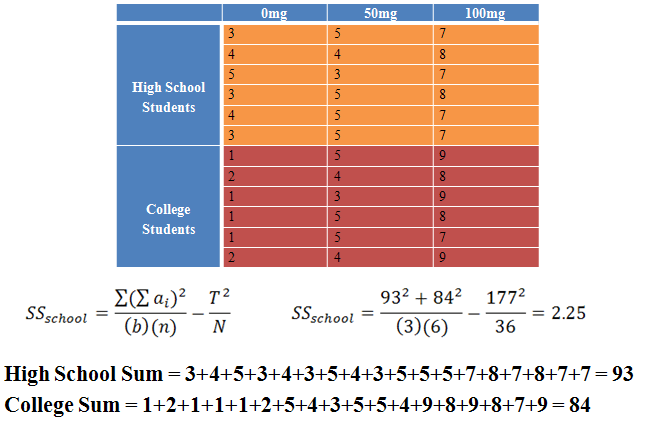
|
Figure 8. |
|---|
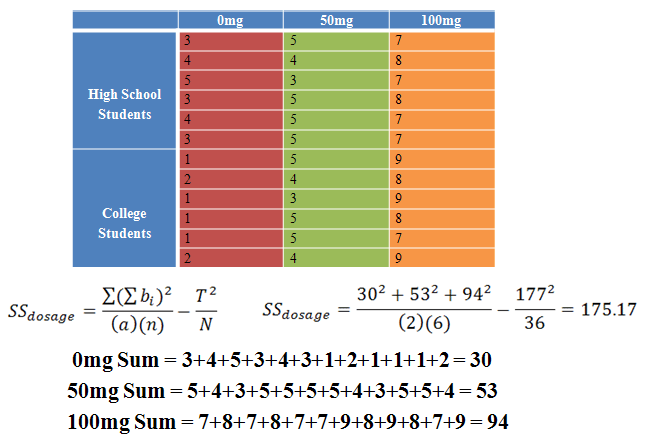
|
Figure 9. |
|---|
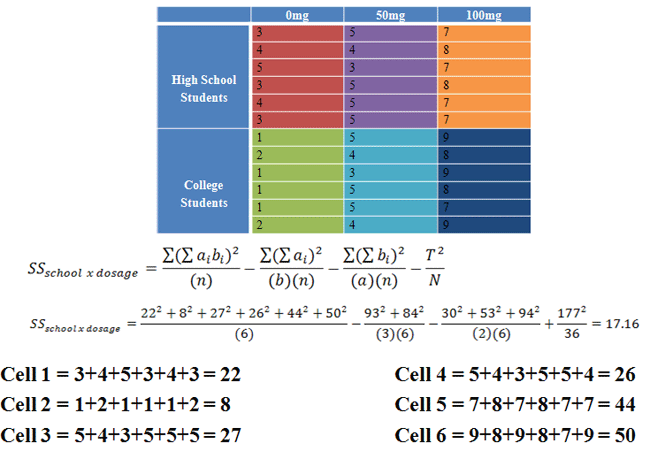
|
Figure 10. |
|---|

|
Figure 11. |
|---|
These SS values are then placed into our source table. We find the last missing SS value by subtracting everything we've found so far from the total.
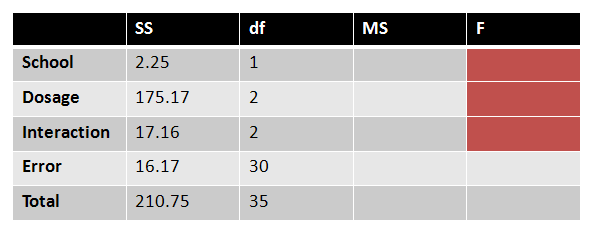
|
Figure 12. |
|---|
Each MS value is found by dividing each SS by their respective degrees of freedom:

|
Figure 13. |
|---|
Finally, our three F values are found:

|
Figure 14. |
|---|
6. State Results
[School] If F is greater than 4.17, reject the null hypothesis.
Our F = 4.166. Retain the null hypothesis.
[Dosage] If F is greater than 3.32, reject the null hypothesis.
Our F = 162.20. Reject the null hypothesis.
[Interaction] If F is greater than 3.32, reject the null hypothesis.
Our F = 15.89. Reject the null hypothesis.
7. State Conclusion
High school students and college students did not have significantly different anxiety levels, F(1, 30) = 4.166, p > 0.05. There was a significant difference between the three different levels of dosage, F(2, 30) = 162.20, p < 0.05. An interaction effect was also present, F(2, 30) = 15.59, p < 0.05.